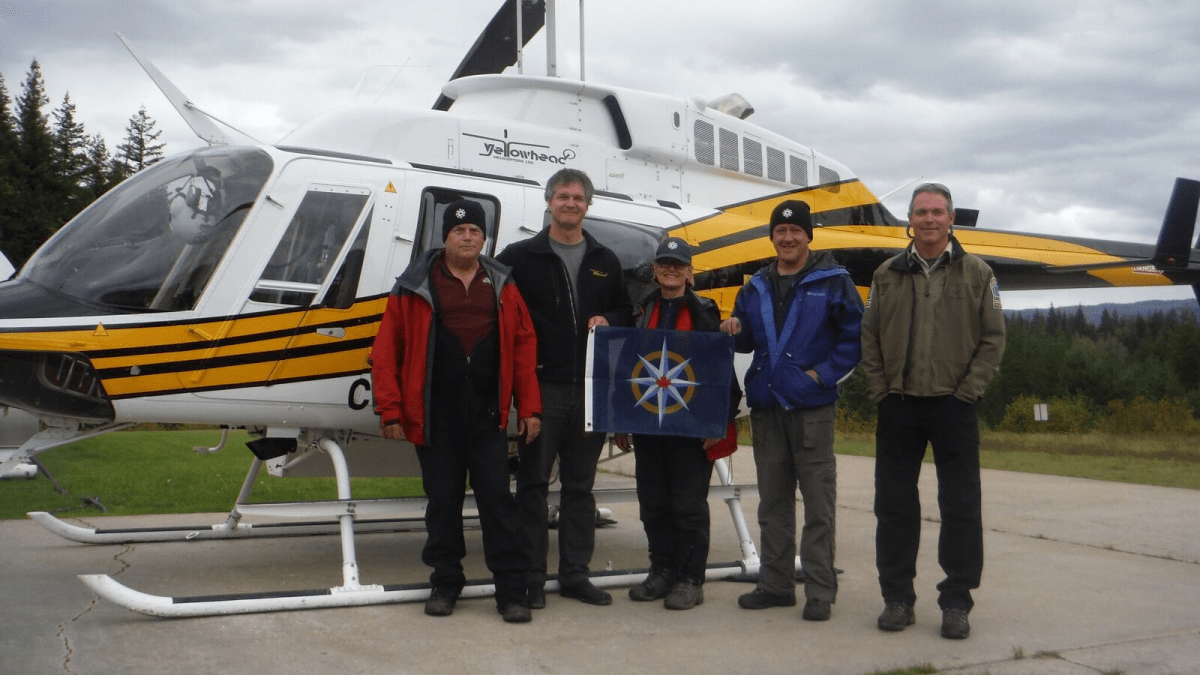Just a few weeks after the announcement of a massive, unexplored cave in B.C.’s Wells Gray Provincial Park, the area has been closed to the public.

BC Parks has posted a bulletin warning that the entire drainage of Ovis Creek, where the cave is located deep in the rugged backcountry, has been closed to all recreational users.
People who break the ban could face up to a $1-million fine.
According to the province, the closure is necessary for several reasons, including ecological sensitivity and public safety — the cave opening is a massive 100 by 60 metre pit, with a nearly vertical 85-metre drop.
Another has to do with the cave’s potential for fragile cultural heritage values. The province is currently consulting with the Simpcw First Nation and Canim Lake Indian Band on whether they have any historical knowledge of the cave or wish to be involved in its formal naming.
WATCH: Huge cave discovered in B.C. interior

Until then, it’s informally been dubbed ‘Sarlacc’s Pit,’ after a monster from the Star Wars franchise that lives in a similar hole.
John Pollack, a caving expert and governor with the Royal Canadian Geological Society, was on the first expedition to the cave in September, and says he’s not surprised about the closure.
“This is a touchy site. It’s very remote, it’s in a conservation area of the park, and yet it is still conceivable, as far back as it is, some people with a light pack could get in there,” he said.
“This is going to be a nasty cave; this is not something you walk into and it’s going to greet you with open arms. It’s deep, it’s got a lot of cold water, it’s going to require a lot of technical gear.”
Not a ‘tourist cave’
Pollack, along with geologist Catherine Hickson and cavers Lee Hollis and Chas Young, who were all involved in September’s visit to the site, are now planning a return to the cave for more serious scientific study.
“This is the way it should unfold. This is not like a new water slide. This is like Mount Robson. That’s a serious climb, this is a serious cave,” he said.
He said the team envisions a party of six to nine people who would camp at the site for a week to 10 days, photograph and map the cave and use radiocarbon dating to determine its age.
Pollack said the team is still securing funding, but with a new financial commitment from the Royal Canadian Geological Society, he said he’s confident they can return by fall 2019.
WATCH: Geologist Catherine Hickson describes cave discovery

The provincial government, which contributed funding to September’s expedition, said any further government funding has yet to be determined.
According to Pollack, a proper exploration of the cave will require a party of three to four people to climb in armed with more than 300 metres of rope, who will have to rig the cave to keep the climbers out of water.
That’s because the massive hole is fed by a rushing alpine creek with frigid water somewhere between 2 C to 4 C.
“You can’t really get in the water. If you’re in the water for too long, even with exposure suits, hypothermia is really going to do a number on you. And it’s easier going down than it is to come back out.
“This is not going to be a tourist cave in any way, shape or form.”
‘Cave of national significance’
The cave was first spotted back in April from a helicopter during a routine provincial caribou count.
Pollack, Hickson and a team spent months studying maps and satellite imagery before flying in to the remote site in September.
WATCH: Calgary man among cave experts that discovered new B.C. cave

The team believes it is one of the largest caves in Canada, and may never have been explored by humans, due to the fact it was likely covered by snow year-round as recently as two decades ago.
“I’ve seen passages as big in Southeast Asia, but as far as a big shaft that’s taking a small river, it’s — I think we’d use the term ‘unprecedented’ in Canada,” said Pollack.
It is made of a layered type of rock known as “striped karst,” and Hickson believes it was formed by rocks and boulders swirling around in rushing glacial meltwater, which eroded the hole deep into the ground.
The team believes the water rushing into the cave feeds a creek that emerges from the ground just over two kilometres away.
- White Rock fatal stabbing suspect and victim may have been in physical altercation: IHIT
- High-profile B.C. sex offender Randall Hopley pleads guilty to 3 charges
- BC Hydro offers free AC units to lower-income, vulnerable customers
- B.C. to ban drug use in all public places in major overhaul of decriminalization






Comments